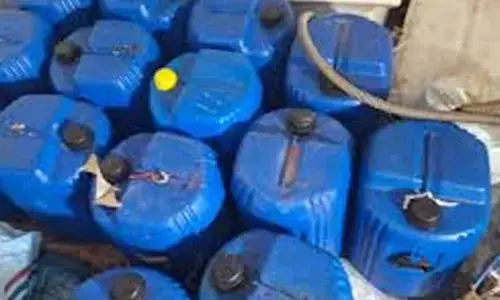Delhi's bad AQI in January raises concerns, experts flag temperature inversion & urban factors
Share :

The days when "parali" (stubble) burning in neighbouring states of Haryana and Punjab was solely blamed for rising pollution levels in Delhi from October to the first week of December have long gone. As January ends, the national capital finds itself fluctuating between "very poor" to "severe" levels of the Air Quality Index (AQI) at several monitoring stations in the city.
The days when "parali" (stubble) burning in neighbouring states of Haryana and Punjab was solely blamed for rising pollution levels in Delhi from October to the first week of December have long gone. As January ends, the national capital finds itself fluctuating between "very poor" to "severe" levels of the Air Quality Index (AQI) at several monitoring stations in the city.
The residents of Delhi now find themselves grappling with a thick blanket of smog, prompting health warnings and raising questions about the root causes of this severe pollution episode.
According to experts, one major factor contributing to the poor air quality in Delhi during the winter months is temperature inversion.
"The city often experiences temperature inversions, where a layer of warm air traps cooler air close to the ground. This phenomenon hampers the dispersion of pollutants, leading to their accumulation in the atmosphere. As a result, PM 2.5 levels surge, causing respiratory concerns for the city's residents and the levels have not come down below 350," said environmentalist Chandraveer Singh.
Experts also hold the high population density and increasing vehicular traffic in Delhi as contributing significantly to air pollution.
"Vehicle emissions release a cocktail of pollutants, including particulate matter, nitrogen dioxide, and carbon monoxide. Industrial activities in and around the city play a role in deteriorating air quality. Stricter measures may be necessary to curb emissions from these sources," said Singh.
The Anand Vihar station on Sunday at 4 p.m. continued to be in "severe" category with PM 2.5 at 416 while PM 10 at 378 and NO2 at 112, according to the Central Pollution Control Board (CPCB).
Even at Bawana station the PM 2.5 and PM 10 were at 442 and 421, in the "severe" levels. These are not two isolated stations, but others including Jahangirpuri, Okhla Phase-II, Mundka, Mandir Marg AQI stations were also in "severe" levels.
The Air Quality Index (AQI) between zero and 50 is considered "good"; 51 and 100 "satisfactory"; 101 and 200 "moderate"; 201 and 300 "poor"; 301 and 400 "very poor"; and 401 and 500 "severe".
Though the Graded Action Response Plan (GRAP) I & II are in force but are they helping to curb or bring down the pollution levels? Experts say no.
Unfavourable meteorological conditions, followed by a drizzle on Tuesday night, calm wind patterns, dense fog, low temperatures, and inversion, were identified by experts as the factors contributing to the entrapment of pollutants.
While rain typically aids in the settling of pollutants, a mere drizzle, in this case, has led to a deterioration in air quality.
"Meteorology is playing a major role, with all other consistent sources operating as usual," said Singh.
For the third time this winter season, GRAP Stage III measures were implemented. Initially enforced from November 2 to 28, and then again from December 22 to January 1, these restrictions were reintroduced on January 14 following a deterioration in Delhi's Air Quality Index (AQI) to 447, categorising it as "severe” but revoked on January 22.
The decision to lift GRAP Stage III was made by the CAQM due to the disruptive impact of these restrictions on a significant number of stakeholders and the general public. The move also considered the improvement observed in the average AQI in Delhi, according to the Commission for Air Quality Management (CAQM) official.















